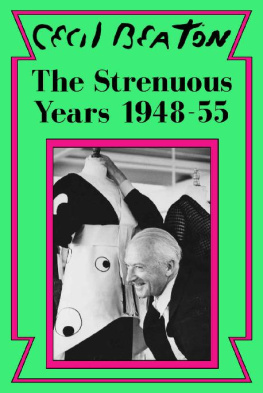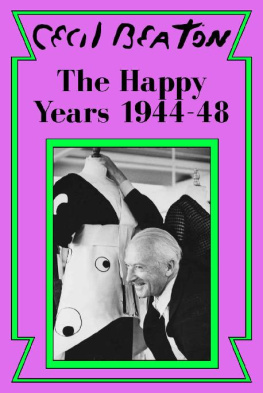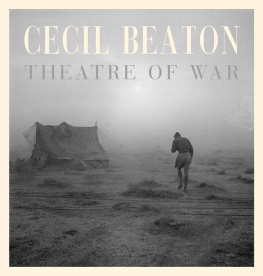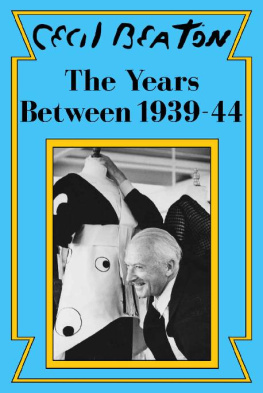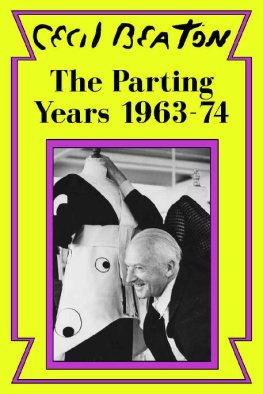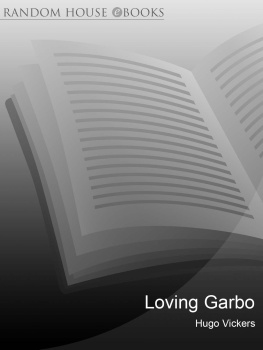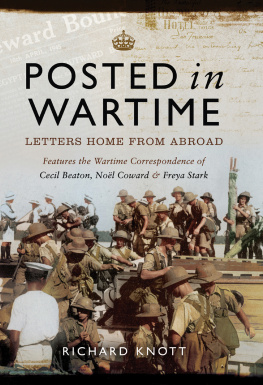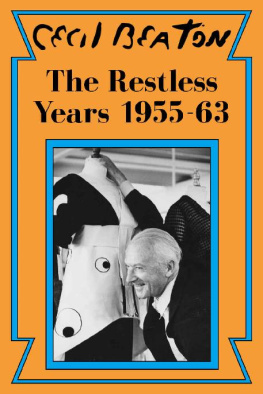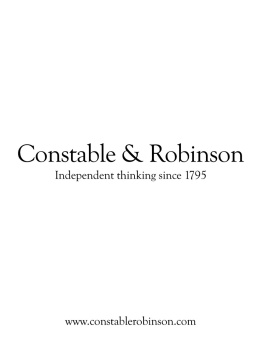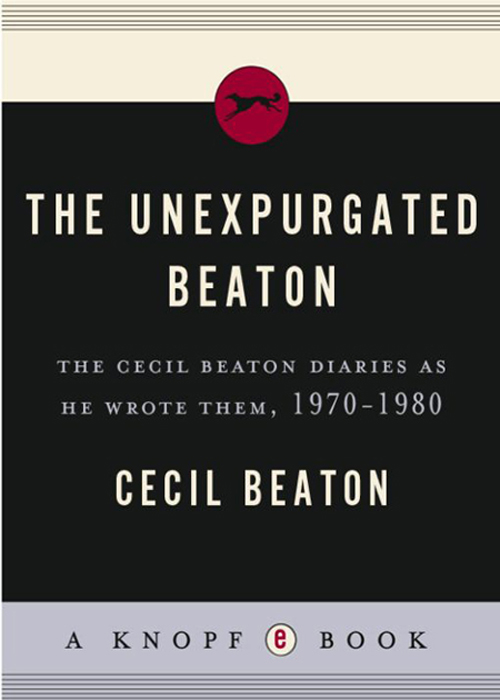
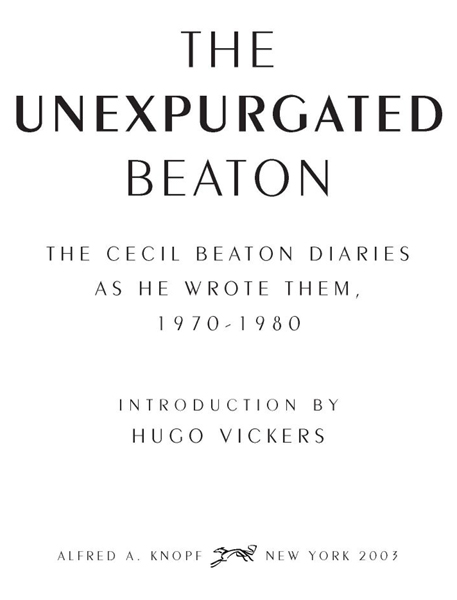
Table of Contents
For Arthur
with love
from his father
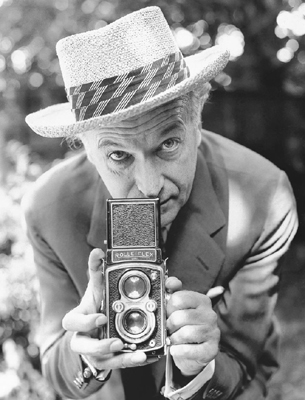
Cecil with his Rolleiflex.
ACKNOWLEDGMENTS
The creation of these diaries proved very different from writing a biography. It was primarily a task of transcription, a task made difficult by Cecil Beatons handwriting, which is almost impossible to decipher, but at least helped by my having twenty-two years of experience in reading it. The transcription was also made easier by my having read all the diaries before, when I was writing his authorised biography. Even so, there were some words that had to be taken at a run. A word like simmer could be summer or manner, words were joined up, spelling was erratic (which in his writing might have been erotic). It was not easy. But I was at least familiar with the cast of characters who appeared, many of whom I knew personally and all too many of whom are now dead, and I had a reasonably good over-view of the general content.
To create these diaries, I worked from photo-copies that I made between 1980 and 1985. When I had done all I could, I went up to St. Johns College, Cambridge, to inspect the original diaries, to fill in gaps and to make sure that everything was in the right order. I am grateful to Dr. Mark Nicholls and Jonathan Harrison at St. Johns.
The advent of a lecture cruise from Civitavecchia in Italy to Fort Lauderdale on board the Seabourn Sun enabled me to transcribe 65,000 words, and I am grateful to Philip Gosling and Elizabeth Sharland for putting me on board.
But I could not have done this on my own. I was helped immeasurably by Brenda de Lange, on the occasions when I could hijack her from looking after our three small children. As a former legal secretary, she not only typed at great speed, but was also able to unravel many of the mysteries of Cecils handwriting when my eyes were unequal to the task. This book would not have been finished in time without her help. She typed 79,000 words in twelve days in January in the course of otherwise very full days. It was a great pleasure working with her, but I fear I also owe her an apology.
I should have read through some of the pages in advance. There were occasions when the content of the diaries was other than what I would normally have chosen to read aloud. So much was this the case that there came a day when I dictated: Isaiah Berlin was in bed with lumbago, and Brenda instinctively gave lumbago a capital L.
My editor, Ion Trewin, was encouraging and supportive throughout, even chasing elusive footnotes. Since he was undergoing the process of transcribing Alan Clarks equally illegible handwriting at the same time as editing my book, I felt a strong bond of sympathy.
I am very grateful to Lydia Cresswell-Jones, Grace Worthington, Juliet Hacking, and Sue Daly at Sothebys for allowing me to reproduce some unusual photographs from the Cecil Beaton archive. I am also most grateful to my friend Richard Jay Hutto, in Macon, Georgia. To him I turned in despair about the more elusive American figures, and he never failed to produce obituaries from the New York Times and newspapers as far afield as San Francisco. He unravelled Phipps family trees, perused the Social Register for me, and solved numerous problems that were keeping me awake at night.
I was also helped in the quest for missing persons by the Countess of Avon, Viscount Norwich (Cecil Beatons other literary executor), Artemis Cooper, Mr. Andrew Alpern, Kristina Stewart, Mr. Samuel Adams Green, Mr. Christopher Gibbs, Mr. Nicholas Haslam, Countess Bunny Esterhazy, Mrs. Ilsa Yardley for her perceptive and helpful copy-editing (solving mysteries from afar), Diane Solway (biographer of Nureyev), Mr. Gerald C. Clarke (biographer of Truman Capote), Mr. Claus von Blow, Viscountess Stuart of Findhorn, Sir John Smiley, Bt, Lord Weidenfeld, Miss Melissa Wyndham, Mr. Charles Biasiny-Rivera, Baron de Red, Marquis de Ravenel, Mr. Anthony Hobson, and Mr. Charles Kidd (editor of Debrett).
Further help came from Pamela, Lady Harlech; the Hon. Lady de Zulueta; Mr. John Curtis; Mr. Philip Hoare; Mr. Hugh Montgomery-Massingberd; Sir Roy Strong; Mr. Patrick OConnor; Mr. Roderick Coupe; Marlene Eilers Koenig; and M. Etienne Grafe.
For this American edition, I am particularly grateful for the help of my editor, Shelley Wanger. Having consulted each other on a number of matters over the years, it has been a joy to finally work with her on a book of my own.
Google.com proved an indispensable source in tracking elusive information. It should be the first port of call for all biographers.
I would also like to thank my agent Gillon Aitken for his guidance, and also Lesley Shaw, and Mrs. Doreen Montgomery, agent to the Cecil Beaton literary estate. Victoria Webb had the unenviable task of coordinating all the last-minute changes.
Finally I would like to thank Mouse, my wife, for putting up with the frantic last days of editing, and for letting me have the help of Brenda at times when she needed her.
Hugo Vickers
June 2003
CECIL BEATON 190480
Cecil Beaton was a man of many partsphotographer, artist, writer, designer for screen and theatre, and arbiter of style. Jean Cocteau described him as Malice in Wonderland and Cyril Connolly called him Rip-van-With-it. Kenneth Tynan noted that if he arrived at your party, he would give the impression that he had just come from a very much better one upstairs. He was an elegant man, a man as much photographed himself as photographing other people. Above all, he was that very rare creature, a total self-creation.
Diana Vreeland, the editor of Vogue, told David Bailey that Cecil realised that theres only one very good life and thats the life you know you want and you make it yourself. Truman Capote agreed: There are very few people that are total self creations and he certainly is one, because nothing in his background... would in any way lead one to suppose that this person would emerge out of this cocoon of middle-class life.
The Beatons came from Somerset and Cecils grandfather, Walter Hardy Beaton, founded Beaton Brothers, a firm that imported railway sleepers from abroad. Grandfather Beaton ended his days as a portly figure, living in some style in a large house in Abbots Langley, Hertfordshire, and on his death in 1904, he left nearly 155,000, no mean sum.
Cecils father, Ernest Beaton, was a timber merchant who made a good enough living to send Cecil to Harrow, but whose business collapsed in the 1920s, when roads ceased to be made from timber blocks. He married Esther (Ettie) Sisson, a good-looking girl, who had come down from Cumberland to stay with her sister, Jessie, who was married to a minor Bolivian diplomat, Colonel Don Pedro Suarez. There is a suggestion that Ernest Beaton never met his wifes parents.
Cecil was born in 1904, and was followed in 1905 by a brother, Reggie, who, sadly, committed suicide when quite young, and two sisters, Nancy (190999) and Baba (191273). Cecil certainly did not know that his maternal grandfather was a blacksmith in Temple Sowerby. When, in later life, he found out, he was not pleased. As a child, he thought his mother was a society lady. He thought the same of his Aunt Jessie Suarez, who, in an enjoyably theatrical way, dressed herself up for diplomatic functions. As he grew up, it dawned on him that his family were not the cream of society, but he set about changing that. There was nothing much he could do about his father, but details of his mothers minor entertainments were sent by Cecil to the social pages. He dressed his sisters up, photographed them frequently as a pair and again made sure that their photographs were on the editors desks awaiting publication.
Next page

